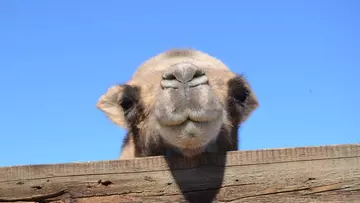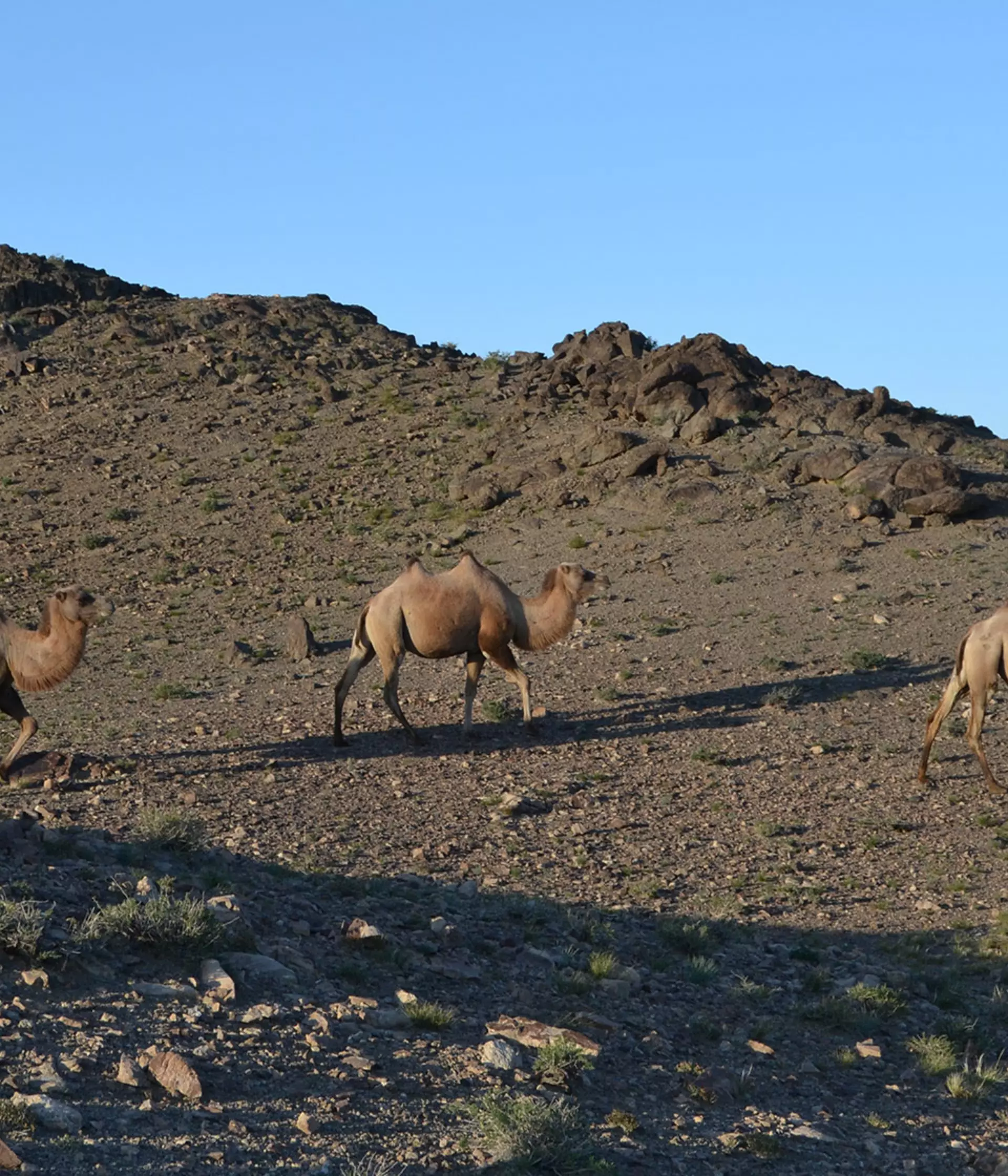
ZSL
Zoological Society of London
Critically Endangered camels
Confusing the well-known, domestic Bactrian camel with its wild and rare counterpart, can have a detrimental effect on the wild camel’s chances of survival, new research has shown.
Published on World Camel Day the new study led by ZSL (Zoological Society London), the Wild Camel Protection Foundation, the University of Kent and the University of Veterinary Medicine, Vienna reminds us that the wild camel is not a feral version of the domestic camel, of which there are far more (an estimated 35 million individuals) and is in fact a separate species.
With less than 950 known to exist in the wild, the Critically Endangered wild camel (Camelus ferus) survives only in Mongolia and China. This new study argues that conflating this species with the well-known Bactrian camel increases the risk of the truly wild camel’s plight being misunderstood and therefore not properly addressed. By diminishing public perception of the extinction risks wild camels face, they don’t receive the conservation attention they need.
The wild camel has always been known as different and distinct from the Bactrian camel in Mongolian: “Temee- Тэмээ” for domestic Bactrian and “Khavtgai- Хавтгай” for wild camel. Something that was not recognised by the Western world until more recently.
To help raise awareness of the wild camel’s plight, the study encourages anyone writing the species in English to use the accurate English common name: -‘wild camel’ instead of ‘Bactrian camel’ ideally alongside its scientific name (Camelus ferus) and, where appropriate, its indigenous name.
We're leading a fight against the illegal wildlife trade in Mongolia, and we're working to protect the last wild camels.
After moving from the North American continent to Eurasia, ancestors of the modern camelid species group separated into “New World” populations, which include the llama and alpaca, and “Old World” camels. The three known species of Old -World camels include the one-humped domestic dromedary (Camelus dromedarius), the two-humped domestic Bactrian camel (Camelus bactrianus) and the Critically Endangered two-humped wild camel (Camelus ferus). Also known as “wild camel” 野骆驼 in Chinese.
The widely known Bactrian camel originates from one wild population, with domestication happening long after it had separated from the wild camel.
The Bactrian camel is a common face on TV and as a working animal in various countries, and there are a recorded 934 domesticated Bactrian camels living in zoos and parks across the world. Unfortunately, due to the names being so commonly misused, many science references, zoos and parks are unintentionally using the incorrect name for the species. With so few wild camels remaining, the study says that confusing the two risks a general misunderstanding of the plight of the wild camel, currently ranked on the IUCN Red List as Critically Endangered, with just 41 looked after in captivity at one single institution in Mongolia.
Researchers at ZSL’s Institute of Zoology, the Durrell Institute of Conservation and Ecology at The University of Kent and the Wild Camel Protection Foundation, and lead author of the paper, Anna Jemmett said: “Common names play a crucial role in distinction between one species and another and have important cultural significance across the world.
“Using an incorrect English common name to describe a species can have implications for the conservation of that animal. It is important that we consider both the scientific evidence and the local cultural distinctions when using these names. In the case of the wild camel both the scientific evidence and local distinctions agree that it is a separate species to the Bactrian camel, yet it is still often referred to as a “wild Bactrian camel”- which it is not.”

This research is the first part of a conservation plan to better protect and support the Critically Endangered wild camel population, which until now is often overlooked as a species in need.
ZSL Senior Research Fellow and co-author of the study, John Ewen said: “Saving a species is possible but challenging and certainly requires a shared understanding of their vulnerability and the urgency for action. This starts with something as simple as accurate naming, and this is where things have been vague for the wild camel.”
Zoos and animal parks play a huge role in educating the public about animals and their conservation needs. It is essential for them to respond to evolving understanding and definitions of animal names and categorisations. ZSL London and Whipsnade Zoos are leading examples of this, and have updated all of their information on camels for visitors to reflect the results of the study.
Adiya Yadamsuren, co-author and founder and researcher at the Wild Camel Protection Foundation in Mongolia said: “Lots of people may know there are at least two names for every species: the common name and scientific name, but if these become mixed it can have an impact on their conservation.
“This paper highlights this with the wild camel – Camelus ferus – which has been confused with the domesticated Bactrian camel – Camelus bactrianus. Using the correct name is very important for public acknowledgement and helping to better understand this species. Common names should be right if we are to correctly foster cross-communication between researchers and the public.”
As we approach a landmark season for nature, with international conferences such as the UN Ocean Summit and COP15 putting a much-needed spotlight on environmental issues, ZSL is calling for world leaders to put nature at the heart of all global decision making.
